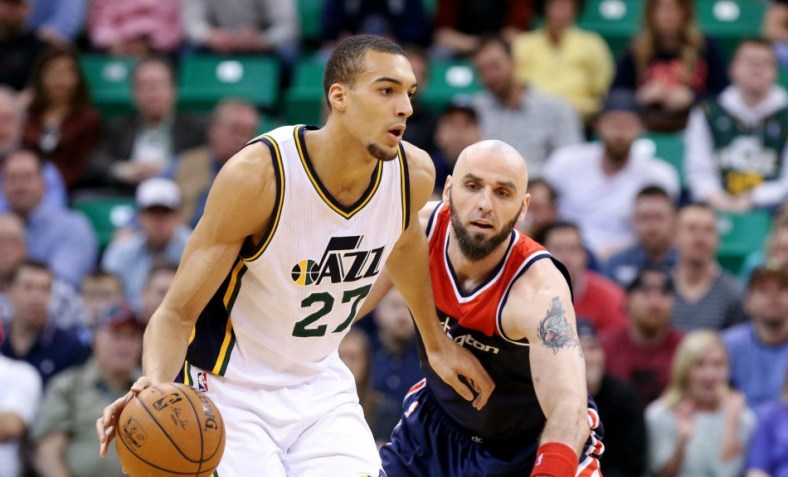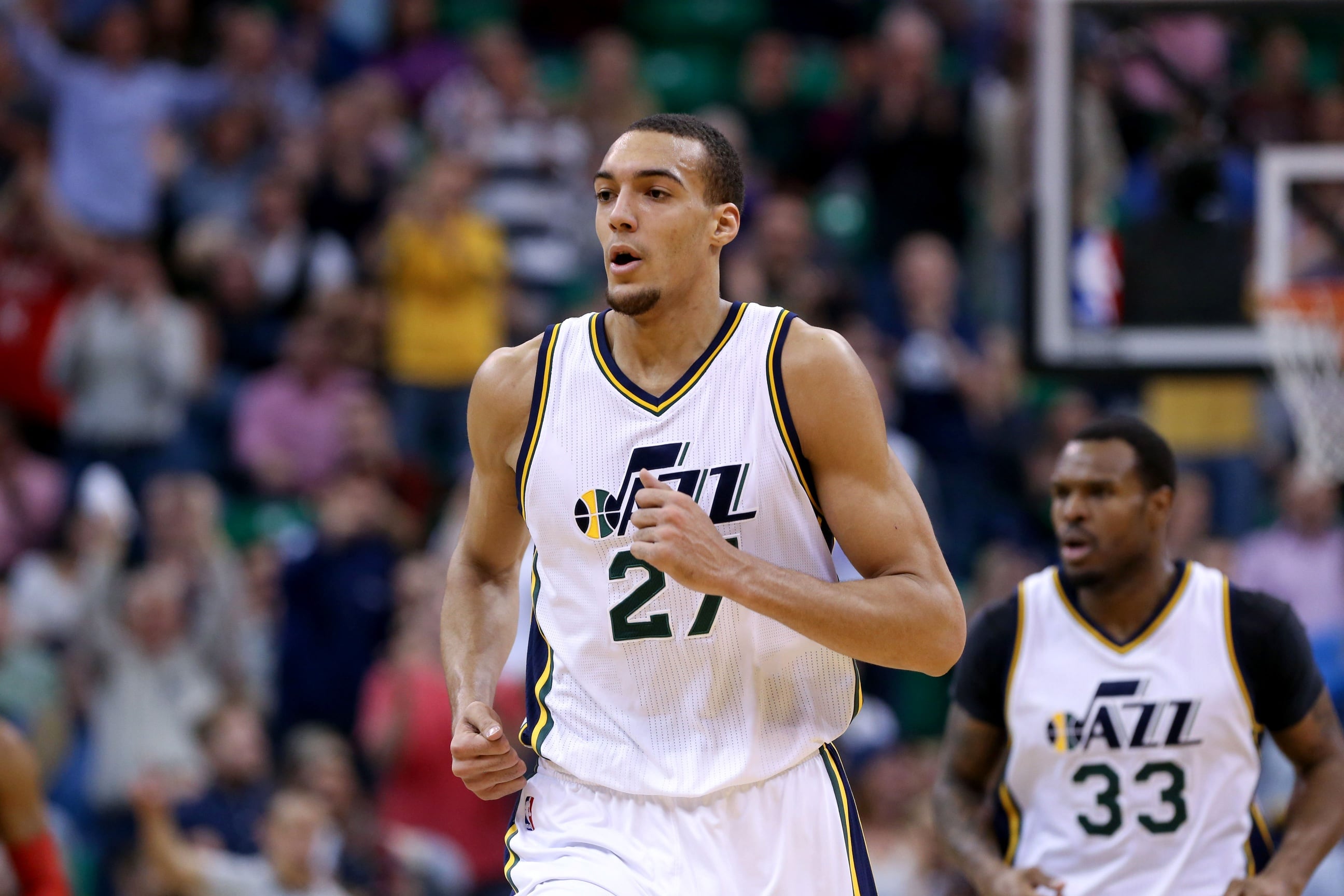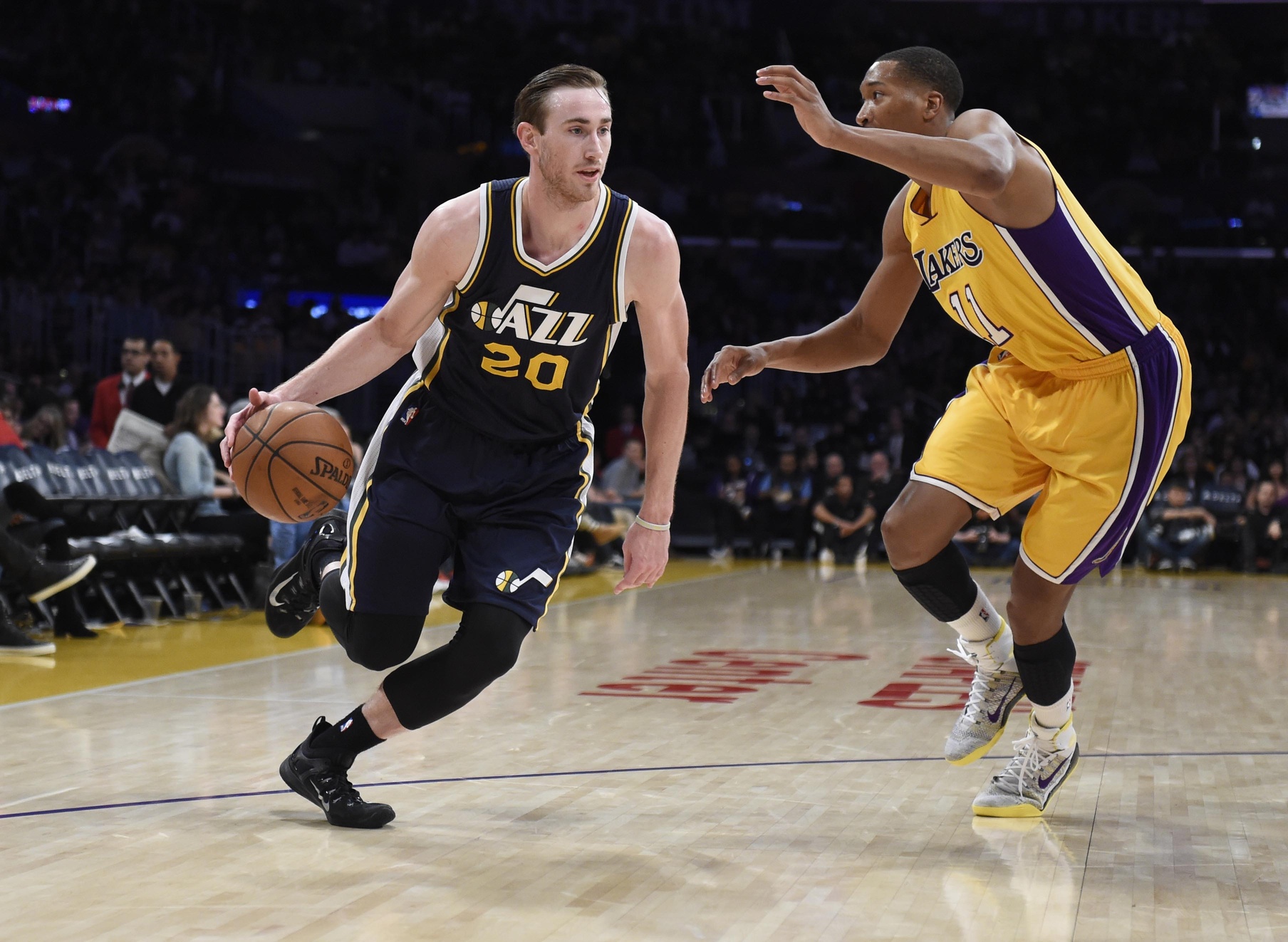
Part of the fun of the second half of the NBA season is seeing which young team will make the leap from potentially good to legitimate threat. This year, that team is the Utah Jazz.
The Jazz have posted an 11-3 record since the All-Star break and trade deadline, including victories over Portland, San Antonio and Houston. What’s really impressive, though, is how they’re winning.
The Backbone

Courtesy of USA Today: Rudy Gobert’s interior presence has been key in Utah.
Utah’s improved play is a direct result of the team becoming a defensive juggernaut. In the 14 games following the break, they’ve given up 100 points only once, and over 90 points only twice. All told, the Jazz are allowing a measly 83.1 points per game since the break, which would best the next stingiest defense by nearly 12 points if maintained for a full season.
Utah boasts good size and athleticism with all five starters—assuming Rodney Hood continues to get the nod over Trey Burke in the backcourt—but it all starts with Rudy Gobert at center. Gobert’s ability to clog the paint and protect the rim has become the stuff of legend in the NBA blogosphere, and for good reason. His emergence made it easy for Jazz general manager Dennis Lindsey to trade Enes Kanter at the deadline.
As good as Gobert has been, Derrick Favors and Gordon Hayward have matched him every step of the way. Favors continues to develop as a threat at both ends of the court, and Hayward is easily living up to the max contract he signed this summer. The trio are the only troika of teammates to all rank in the top five in PER at their respective positions: Gobert is tied for fourth among centers, with Favors and Hayward rank fifth among power forwards and small forwards, respectively.
The Flaw in the Plan
While Utah’s offense has been respectable, ranking 15th in offensive efficiency, 16th in effective field goal percentage and 17th in true shooting percentage, they are in dire need of a playmaker. As a team, the Jazz are tied for 23rd in percentage of possessions that end in assists, and no one on the roster averages more than 4.5 per game. Much of the offense runs through Hayward, and while surprisingly competent in that role, he’s best-suited as a second option.
Utah is starving for a player who can put pressure on the defense by attacking the rim and force double teams. They’re surviving on league-leading offensive rebounding rates and respectable outside shooting, but they need more.
Rookie guard Dante Exum has the ability to develop into that kind of dynamic threat, but he’s not there yet, and it’s unclear if he’ll ever reach his potential. His ball-handling looks shaky, and he doesn’t have the confidence to do much more than catch and shoot right now. Second-year point guard Burke has regressed from his solid rookie season, and his struggles as a scorer are becoming more pronounced.
What’s next?

Courtesy of USA Today: The remainder of the season will act as a step in the right direction for Utah.
Fourteen games is a small sample size, but Utah has played at such a high level that it’s impossible their leap is a fluke. More importantly, the core of the team is young, and they’re all under contract for the foreseeable future.
Making the playoffs next year in the loaded Western Conference may prove difficult, but the talent is there, as are the resources for a significant trade. The return of wing Alec Burks from shoulder surgery will only bolster the roster.
Behind a defense that makes the opposition thoroughly miserable, the Jazz are heading in the right direction. They’re close, they just need one more push up the mountain.
Photo: USA Today